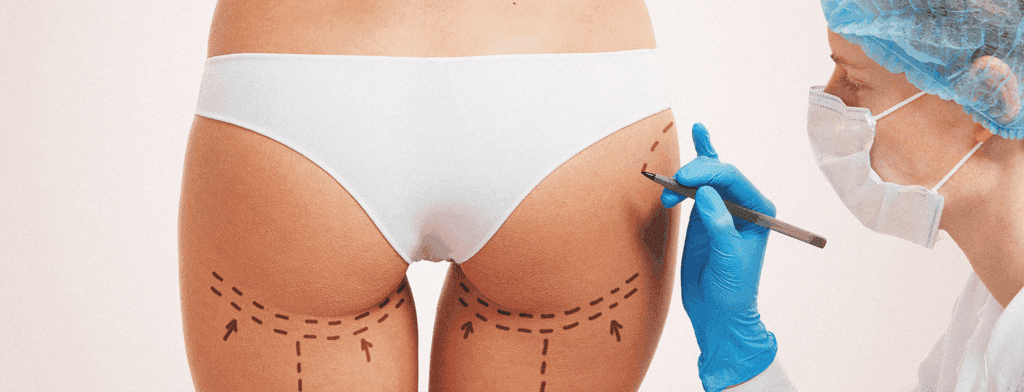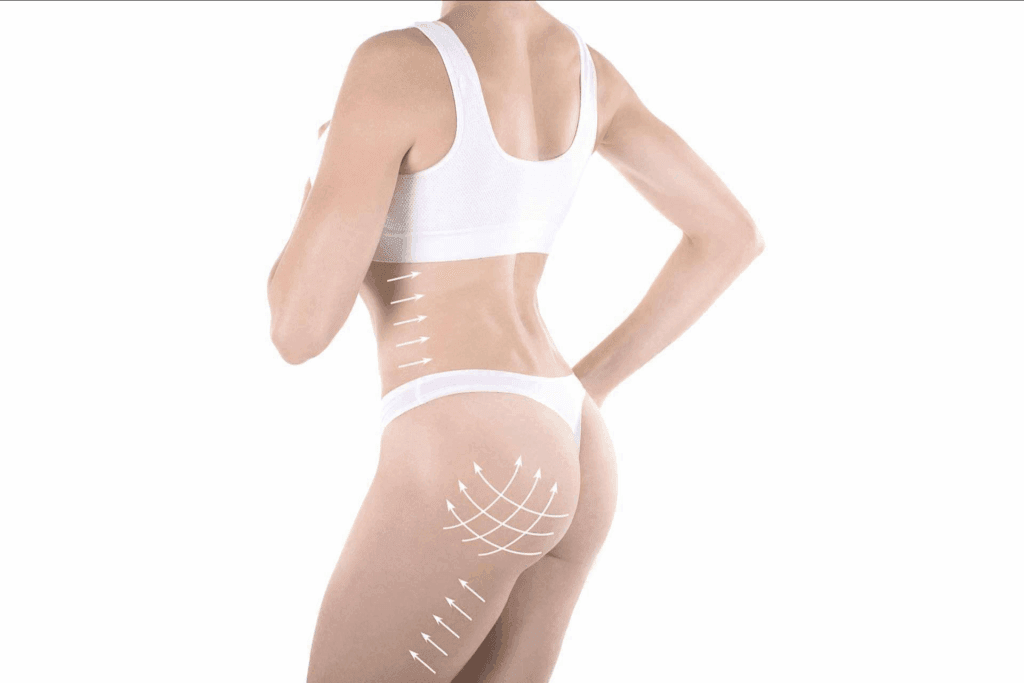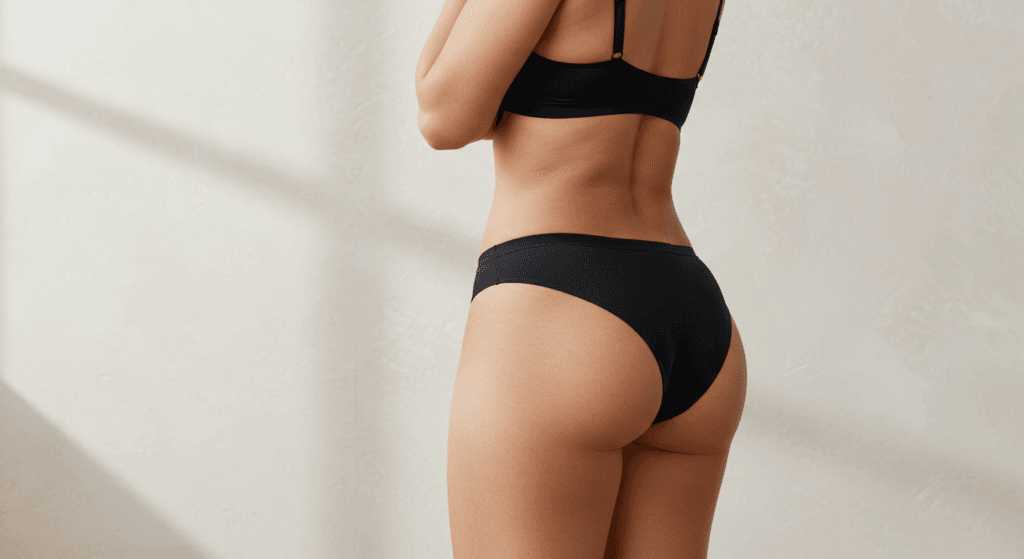Are you considering gluteal augmentation surgery but wondering, “How long do the results last, and can they be permanent?” You’re not alone. This is one of the most common questions among individuals exploring buttock enhancement procedures. Whether you’re looking to enhance your curves, restore volume after weight loss, or achieve a more balanced silhouette, understanding the longevity of your results is crucial for making an informed decision.
In this comprehensive guide, we’ll dive deep into the lifespan of gluteal augmentation results, the factors that influence their durability, and whether permanent options exist. We’ll also explore the different types of procedures, what to expect during recovery, and how to maintain your results for the long term. By the end, you’ll have a clear understanding of how to maximize the benefits of your gluteal augmentation surgery.
Tabla de contenido
Understanding Gluteal Augmentation Surgery
Gluteal augmentation is a cosmetic procedure designed to enhance the size, shape, and projection of the buttocks. It is a popular choice for individuals seeking a more voluptuous or balanced figure. There are two primary types of gluteal augmentation procedures: Brazilian Butt Lift (BBL) y Buttock Augmentation with Implants. Each method has its own benefits, risks, and longevity considerations.
1. Brazilian Butt Lift (BBL)
The Brazilian Butt Lift (BBL) is a fat transfer procedure that involves liposuction to remove fat from areas like the abdomen, thighs, or lower back, followed by the injection of this purified fat into the buttocks. The BBL is favored for its natural-looking results and the added benefit of body contouring through liposuction.
Key Benefits:
- Uses your body’s own fat, reducing the risk of allergic reactions.
- Provides a dual benefit of fat removal and buttock enhancement.
- Results can look and feel natural.
Potential Drawbacks:
- Not all injected fat survives the transfer process.
- Results may vary based on the patient’s anatomy and the surgeon’s technique.
- Requires sufficient donor fat for optimal results.
2. Buttock Augmentation with Implants
Buttock augmentation with implants involves the surgical placement of silicone implants to enhance the size and shape of the buttocks. This method is ideal for individuals who lack sufficient donor fat for a BBL or desire more dramatic and predictable results.
Key Benefits:
- Provides immediate and predictable results.
- Ideal for individuals with limited body fat.
- Implants can be customized to achieve the desired shape and size.
Potential Drawbacks:
- Higher risk of complications such as infection, implant displacement, or capsular contracture.
- May require revision surgery over time.
- Results may feel less natural compared to fat transfer.
For more details on buttock augmentation with implants, visit our page on Buttock Augmentation Surgery with Implants.

How Long Do Gluteal Augmentation Results Last?
The longevity of gluteal augmentation results depends on the type of procedure performed, the patient’s lifestyle, and how well they follow post-operative care instructions. Below, we break down the expected lifespan of results for both BBL and implant-based augmentation.
1. Longevity of Brazilian Butt Lift (BBL) Results
The results of a BBL can last for many years, but they are not considered permanent. This is because the body naturally absorbs some of the transferred fat during the initial healing process. Typically, about 60-80% of the injected fat survives long-term, while the rest is reabsorbed by the body within the first few months.
Factors Influencing BBL Longevity:
- Surgeon’s Technique: A skilled surgeon will use advanced techniques to maximize fat survival.
- Patient’s Anatomy: Individuals with good skin elasticity and sufficient donor fat tend to have longer-lasting results.
- Post-Operative Care: Following your surgeon’s instructions, such as avoiding sitting directly on your buttocks for several weeks, can significantly improve fat retention.
- Lifestyle Factors: Maintaining a stable weight and avoiding significant fluctuations can help preserve your results.
With proper care, BBL results can last 5-10 years or longer. However, natural aging, weight changes, and gravity can gradually alter the appearance of your buttocks over time.
2. Longevity of Buttock Augmentation with Implants
Buttock implants are designed to provide long-lasting results, but they are not necessarily permanent. The implants themselves can last for 10-15 years or more, but factors such as implant quality, surgical technique, and the patient’s body can influence their durability.
Factors Influencing Implant Longevity:
- Implant Quality: High-quality silicone implants are more durable and less likely to rupture or shift.
- Surgical Technique: Proper placement and securing of the implants reduce the risk of displacement or complications.
- Patient’s Body: Changes in weight, muscle tone, and skin elasticity can affect the appearance of the implants over time.
- Post-Operative Care: Following your surgeon’s guidelines for recovery and avoiding activities that strain the implants can extend their lifespan.
While implants can last for many years, they may eventually require replacement due to wear and tear, changes in the patient’s body, or personal preference for a different size or shape.

Can Gluteal Augmentation Results Be Permanent?
The question of whether gluteal augmentation results can be permanent depends on the procedure and how you define “permanent.” While no cosmetic procedure can stop the natural aging process, some methods offer longer-lasting results than others.
1. Are BBL Results Permanent?
BBL results are not considered permanent because the body can reabsorb some of the transferred fat over time. However, the fat cells that survive the transfer process can last indefinitely, provided the patient maintains a stable weight and healthy lifestyle. Significant weight loss or gain can alter the appearance of the buttocks, potentially requiring touch-up procedures to restore the desired shape.
2. Are Buttock Implants Permanent?
Buttock implants are not permanent in the sense that they will last forever. However, they are designed to be long-lasting. With proper care, implants can remain in place for 10-15 years or more. Over time, factors such as implant wear, changes in the patient’s body, or personal preference may necessitate revision surgery to replace or adjust the implants.
3. How to Maximize the Longevity of Your Results
Whether you opt for a BBL or implants, there are several steps you can take to extend the lifespan of your gluteal augmentation results:
For BBL Patients:
- Follow your surgeon’s post-operative instructions carefully, including avoiding sitting directly on your buttocks for the recommended period.
- Maintain a stable weight to prevent fat loss or gain in the buttocks.
- Engage in regular exercise to maintain muscle tone and skin elasticity.
- Consider touch-up procedures if needed to restore volume or shape.

For Implant Patients:
- Choose a board-certified surgeon with experience in buttock augmentation to ensure proper implant placement.
- Follow all post-operative care instructions to minimize the risk of complications.
- Monitor your implants for any changes and attend regular follow-up appointments with your surgeon.
- Consider implant replacement if you notice significant changes in shape, size, or comfort.
Conclusión
Key Takeaways
- Gluteal augmentation results are long-lasting but not always permanent. BBL results can last 5-10 years or longer, while implants can last 10-15 years or more with proper care.
- The longevity of your results depends on the procedure type, surgeon’s technique, and your lifestyle. Maintaining a stable weight and following post-operative care instructions are crucial for preserving your results.
- Touch-up procedures may be necessary to maintain the desired appearance, especially after significant weight changes or aging.
- Choosing a qualified surgeon is essential for achieving optimal, long-lasting results and minimizing the risk of complications.
Next Steps
If you’re ready to explore gluteal augmentation surgery, the next step is to consult with a board-certified plastic surgeon who specializes in buttock enhancement procedures. During your consultation, you can discuss your goals, learn about the best procedure for your needs, and create a personalized treatment plan.
For more information on body contouring procedures, check out our pages on Thighplasty Results and Longevity y How Long Does a Tummy Tuck Last.
Preguntas frecuentes (FAQ)
1. How long does it take to recover from gluteal augmentation surgery?
Recovery time varies depending on the procedure. For a BBL, most patients can return to work within 1-2 weeks but should avoid sitting directly on their buttocks for at least 6-8 weeks. For buttock implants, recovery may take 2-4 weeks, with full healing taking several months. Your surgeon will provide detailed post-operative care instructions to ensure a smooth recovery.
2. Can I sit normally after a BBL?
After a BBL, it’s crucial to avoid sitting directly on your buttocks for at least 6-8 weeks. This allows the transferred fat to establish a blood supply and integrate with your body. Your surgeon may recommend using a special cushion or sitting in a way that minimizes pressure on the buttocks during this period.
3. What are the risks of gluteal augmentation surgery?
Like any surgical procedure, gluteal augmentation carries risks, including infection, bleeding, scarring, and anesthesia complications. For BBLs, there is a risk of fat embolism, while implants carry risks such as displacement, rupture, or capsular contracture. Choosing a qualified surgeon and following all pre- and post-operative instructions can minimize these risks.
4. How much does gluteal augmentation surgery cost?
The cost of gluteal augmentation varies depending on the procedure, surgeon’s fees, geographic location, and other factors. On average, a BBL can cost between $5,000 and $15,000, while buttock implants may range from $6,000 to $12,000. It’s essential to discuss pricing and financing options with your surgeon during your consultation.
5. Can I combine gluteal augmentation with other procedures?
Yes, many patients choose to combine gluteal augmentation with other body contouring procedures, such as liposuction, thighplasty, or tummy tuck, to achieve a more comprehensive transformation. Your surgeon can help you determine the best combination of procedures based on your goals and anatomy.
6. Will gluteal augmentation leave visible scars?
Scarring is minimal with a BBL, as the incisions for liposuction are small and strategically placed. For buttock implants, scars are typically located in the natural crease between the buttocks, making them less visible. Over time, scars usually fade and become less noticeable.
7. How do I choose between a BBL and buttock implants?
The best procedure for you depends on your goals, anatomy, and lifestyle. A BBL is ideal for individuals who have sufficient donor fat and desire a natural-looking enhancement. Buttock implants are better suited for those who lack donor fat or want more dramatic and predictable results. Consulting with a qualified surgeon can help you make an informed decision.
8. What should I look for in a gluteal augmentation surgeon?
When choosing a surgeon, look for someone who is board-certified, has extensive experience in gluteal augmentation procedures, and can provide before-and-after photos of their work. It’s also important to read patient reviews and schedule a consultation to discuss your goals and ensure you feel comfortable with the surgeon’s approach.
| Procedimiento | Longevity | Tiempo de recuperación | Best For |
|---|---|---|---|
| Brazilian Butt Lift (BBL) | 5-10+ years | 1-2 weeks (return to work), 6-8 weeks (full recovery) | Individuals with sufficient donor fat seeking natural results |
| Buttock Augmentation with Implants | 10-15+ years | 2-4 weeks (return to work), several months (full recovery) | Individuals with limited donor fat or desiring dramatic results |
Nuestros cirujanos y profesionales afiliados
At Surgyteam, we are proud to collaborate with a distinguished team of medical professionals, each bringing a wealth of expertise and a commitment to patient-centered care.
- Dr. Mehmet Fatih Okyay (Dr. MFO): Plastic, Reconstructive and Aesthetic Surgery Specialist. Co-founder of Surgyteam. FEBOPRAS certified. (https://www.dr-mfo.com/)
- Dr. Selçuk Yılmaz: Plastic, Reconstructive and Aesthetic Surgery Specialist. (https://drselcukyilmaz.com)
- Dr. Ebru Okyay: Dermatology Specialist. (https://drebruokyay.com/)
- Dr. Mustafa Keleş: Aesthetic, Plastic and Reconstructive Surgery Specialist. (https://www.medstar.com.tr/doktorlar/mustafa-keles/)
- Dr. Boray Yücel: Plastic, Reconstructive and Aesthetic Surgery Specialist. (https://borayucel.com/)
- Dr. Sibel Atalay: Plastic, Reconstructive and Aesthetic Surgery Specialist. Clinic with International Health Tourism Authorization Certificate. (https://www.sibelatalay.com.tr/)
- Dr. Mert Meral: Plastic, Reconstructive and Aesthetic Surgery Specialist. EBOPRAS certified. (https://mertmeral.com/)
To learn more about Surgyteam and how we can assist you, please visit our website:
https://surgyteam.com/
Disclaimer: This blog post is intended for informational purposes only and does not constitute medical advice. Costs are estimates and can vary. Always consult with a qualified medical professional for personalized advice and treatment.



